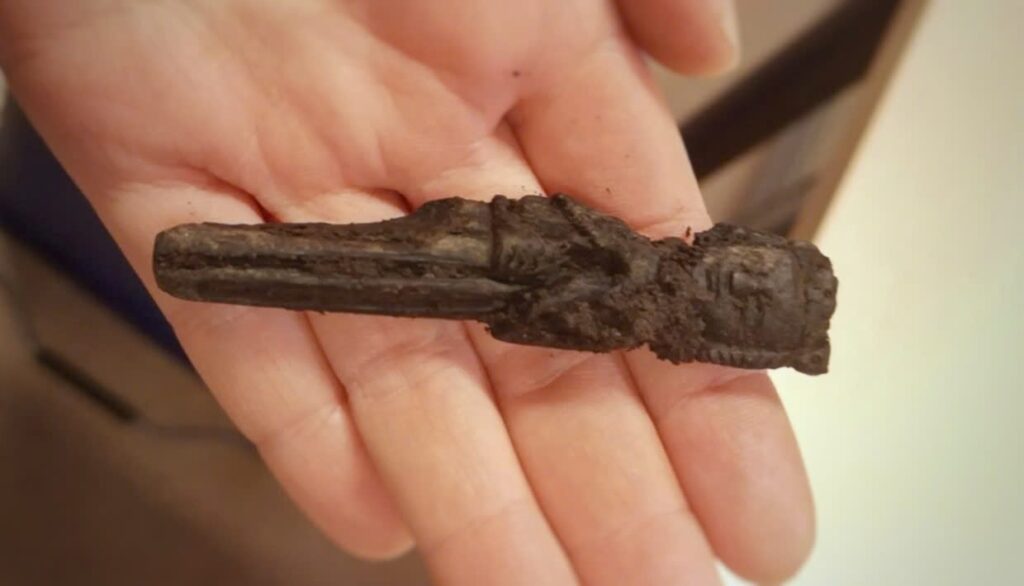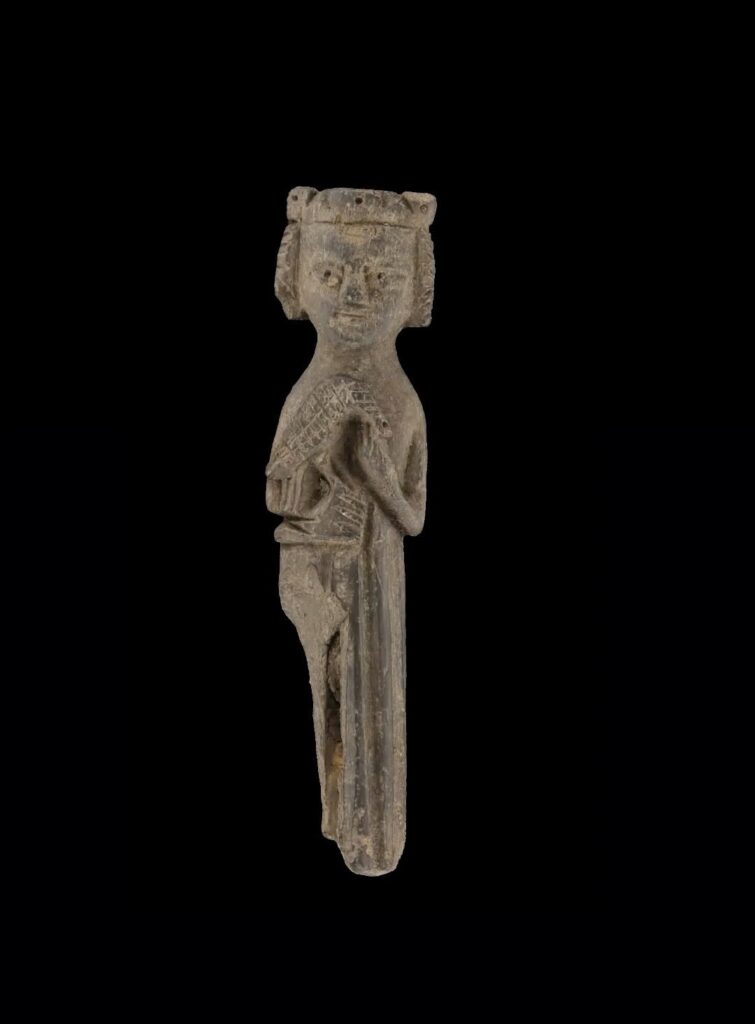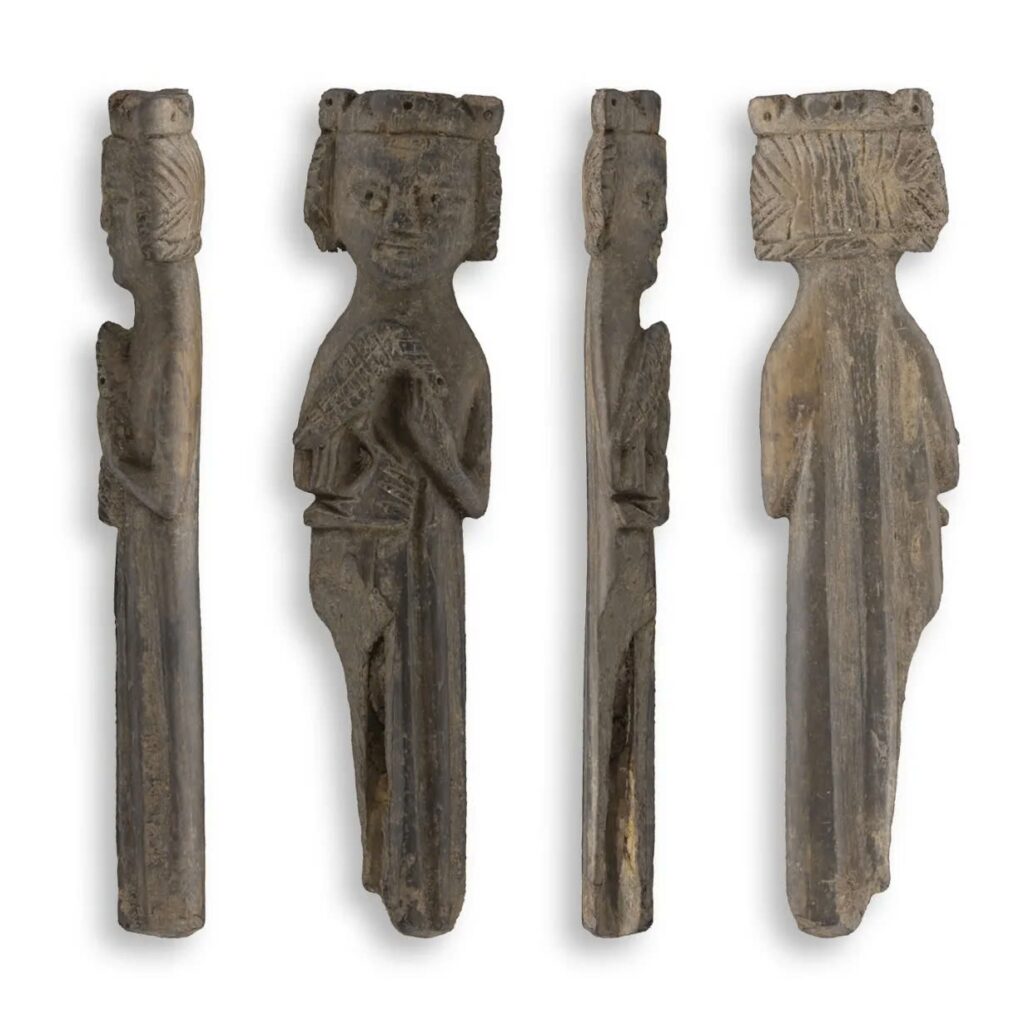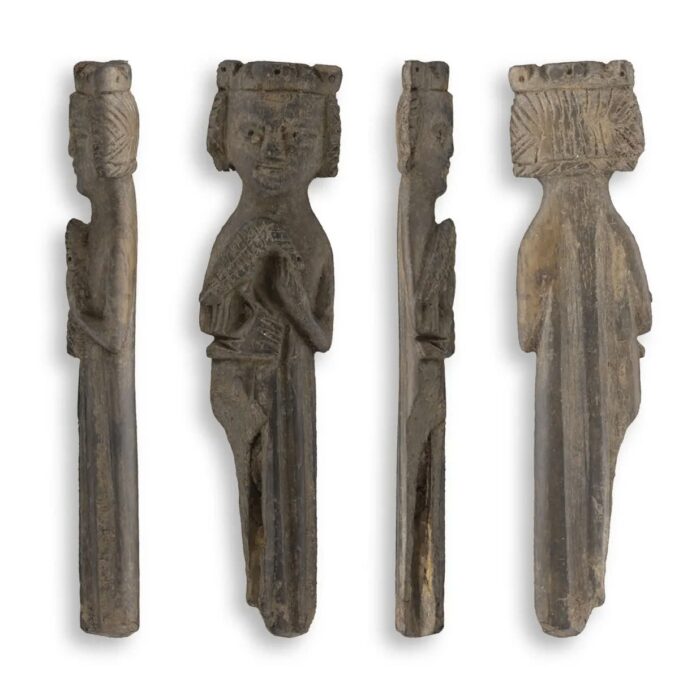Unexpected Discovery in Oslo’s Royal Ruins

In a remarkable archaeological find, a small but significant artifact has shed new light on medieval Norwegian nobility. Amidst the ruins of a fortified royal mansion in Oslo, archaeologist Ann-Ingeborg Floa Grindhaug unearthed a fascinating three-inch-long figure, intricately carved from bone or antler.
From Fishbone to Royal Treasure
What initially appeared to be a large fishbone soon revealed itself as something far more extraordinary. Upon closer inspection, Grindhaug discerned the unmistakable features of a crowned figure holding a falcon – a tantalizing glimpse into the world of 13th-century aristocratic pursuits.

Decoding the Artifact’s Secrets
A Miniature Masterpiece
The 7.5 cm long figurine, adorned on both sides, boasts a fairly flat oval cross-section. Its intricate details, from the figure’s attire to its hairstyle, point to a mid-13th century origin, likely crafted in an Oslo workshop.
Falconry: A Noble Pastime
According to Kjartan Hauglid, an art historian at the Norwegian Institute for Cultural Heritage Research (NIKU), this artifact represents the earliest known Scandinavian depiction of falconry – a favored pastime among the nobility. The smiling, curly-haired figure, crowned and holding a falcon on a gloved arm, could potentially represent a king or queen.
Gender Equality in Medieval Falconry
Interestingly, the presence of the falcon doesn’t necessarily indicate the figure’s gender. Researchers note that women were also skilled falconers during the medieval period, challenging our preconceptions about gender roles in history.
A Window into 13th-Century Fashion and Politics
Dating the Artifact

The figure’s clothing and headpiece design firmly place it in the early 13th century. For married women of the time, the depicted head linen was particularly fashionable, offering valuable insights into medieval fashion trends.
A Royal Connection
The hollow lower half of the figure suggests it may have been mounted on a shaft, possibly for use by a noble or even royalty. This artifact might be linked to King Håkon Håkonsson, who ruled Norway from 1217 to 1263 and was known to practice falconry. The king often gifted precious falcons to other European royal houses as a means of forging political alliances.

This extraordinary find not only offers a rare glimpse into the pastimes of medieval Norwegian nobility but also provides valuable insights into the fashion, craftsmanship, and diplomatic practices of 13th-century Scandinavia.

